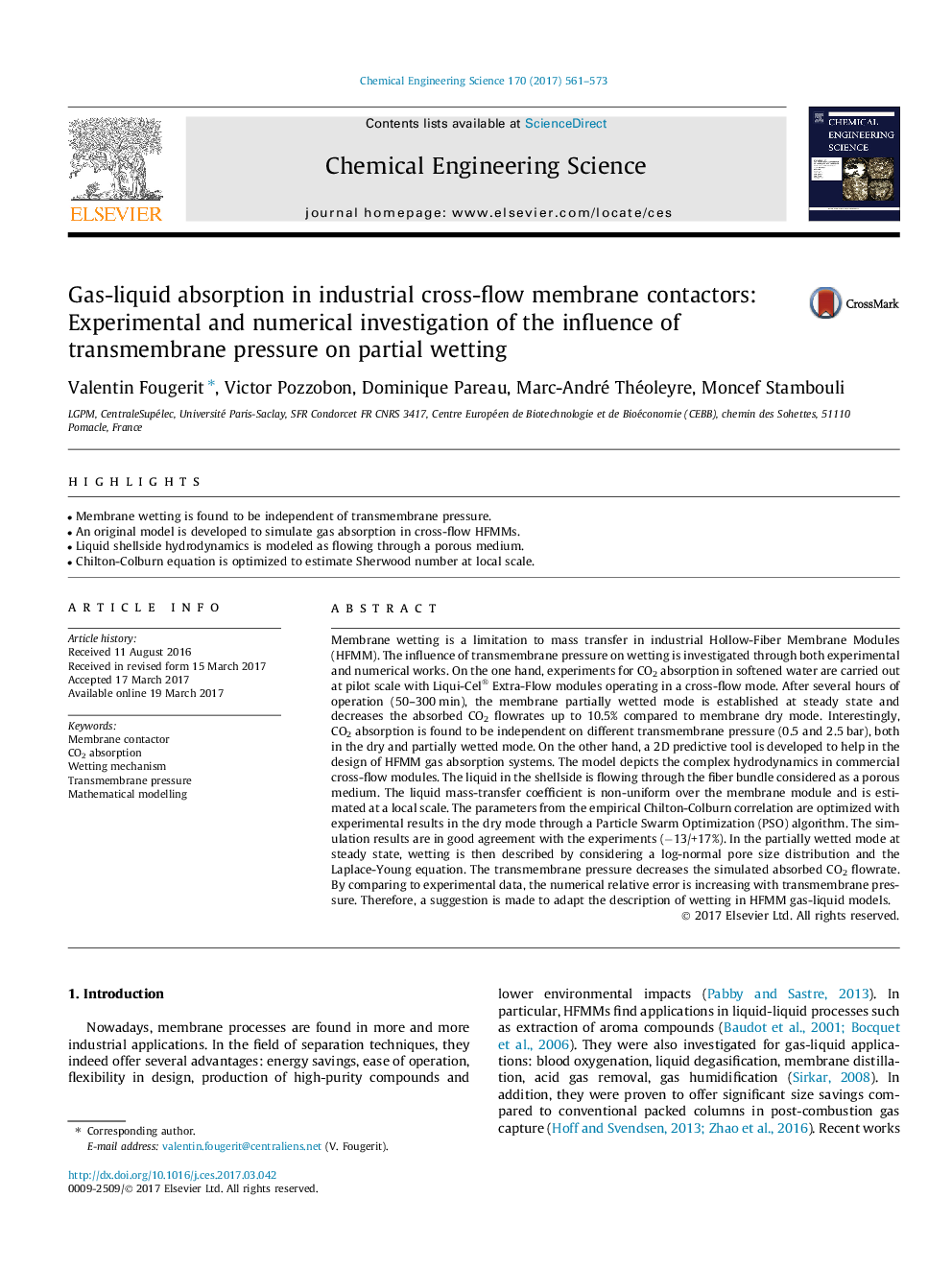| کد مقاله | کد نشریه | سال انتشار | مقاله انگلیسی | نسخه تمام متن |
|---|---|---|---|---|
| 6467295 | 1423249 | 2017 | 13 صفحه PDF | دانلود رایگان |
- Membrane wetting is found to be independent of transmembrane pressure.
- An original model is developed to simulate gas absorption in cross-flow HFMMs.
- Liquid shellside hydrodynamics is modeled as flowing through a porous medium.
- Chilton-Colburn equation is optimized to estimate Sherwood number at local scale.
Membrane wetting is a limitation to mass transfer in industrial Hollow-Fiber Membrane Modules (HFMM). The influence of transmembrane pressure on wetting is investigated through both experimental and numerical works. On the one hand, experiments for CO2 absorption in softened water are carried out at pilot scale with Liqui-Cel® Extra-Flow modules operating in a cross-flow mode. After several hours of operation (50-300Â min), the membrane partially wetted mode is established at steady state and decreases the absorbed CO2 flowrates up to 10.5% compared to membrane dry mode. Interestingly, CO2 absorption is found to be independent on different transmembrane pressure (0.5 and 2.5Â bar), both in the dry and partially wetted mode. On the other hand, a 2D predictive tool is developed to help in the design of HFMM gas absorption systems. The model depicts the complex hydrodynamics in commercial cross-flow modules. The liquid in the shellside is flowing through the fiber bundle considered as a porous medium. The liquid mass-transfer coefficient is non-uniform over the membrane module and is estimated at a local scale. The parameters from the empirical Chilton-Colburn correlation are optimized with experimental results in the dry mode through a Particle Swarm Optimization (PSO) algorithm. The simulation results are in good agreement with the experiments (â13/+17%). In the partially wetted mode at steady state, wetting is then described by considering a log-normal pore size distribution and the Laplace-Young equation. The transmembrane pressure decreases the simulated absorbed CO2 flowrate. By comparing to experimental data, the numerical relative error is increasing with transmembrane pressure. Therefore, a suggestion is made to adapt the description of wetting in HFMM gas-liquid models.
Journal: Chemical Engineering Science - Volume 170, 12 October 2017, Pages 561-573
